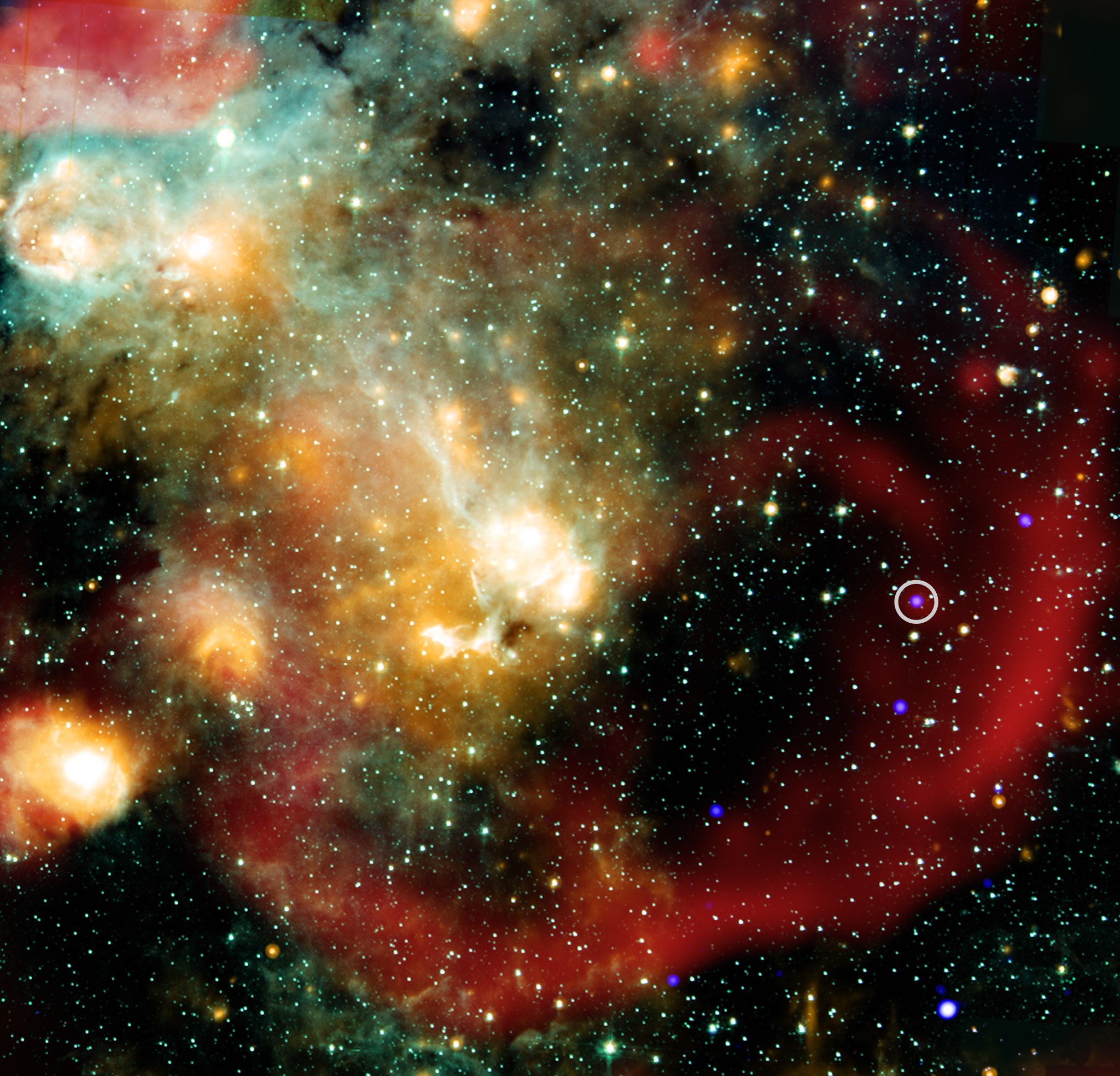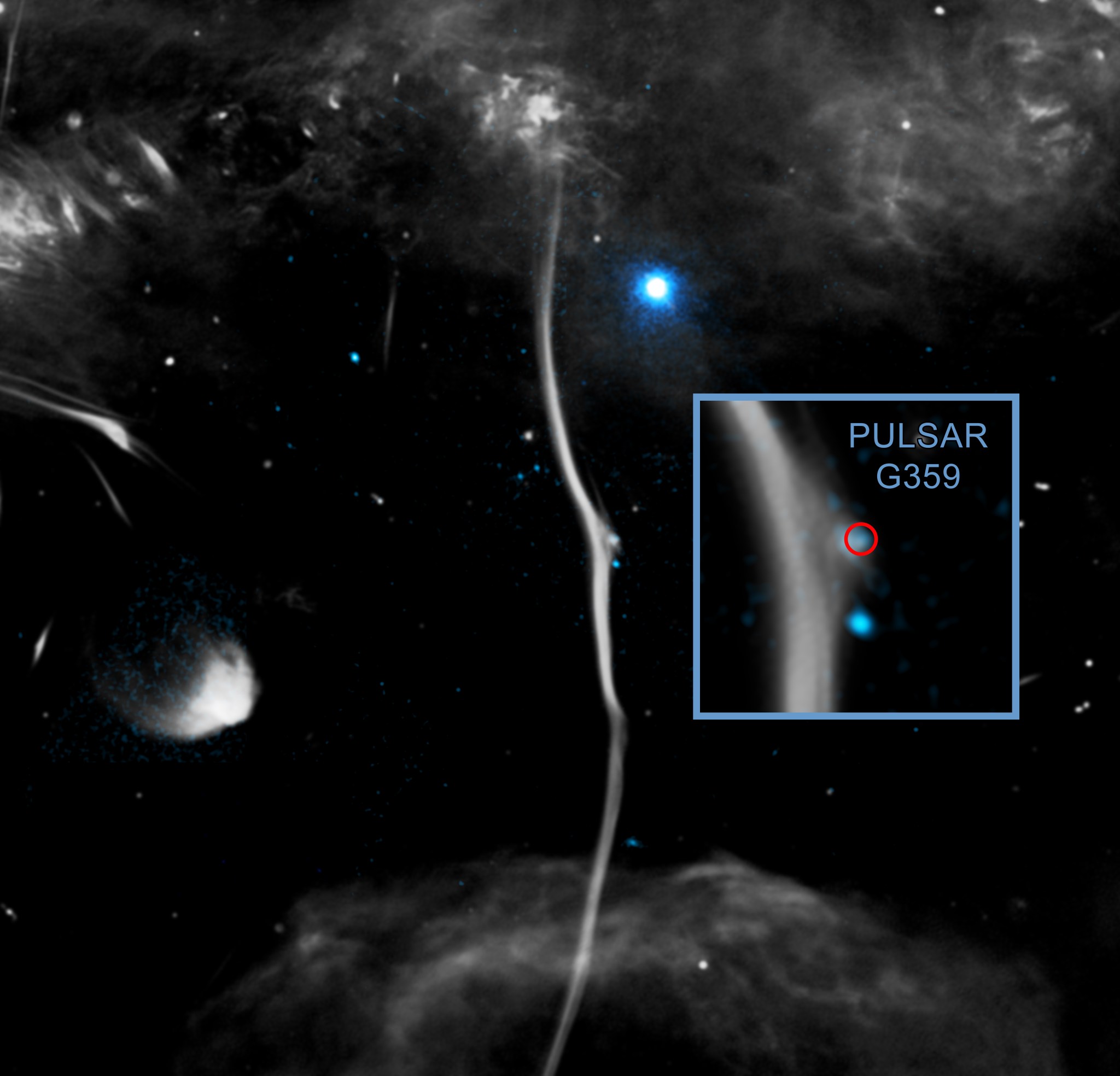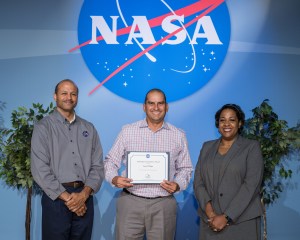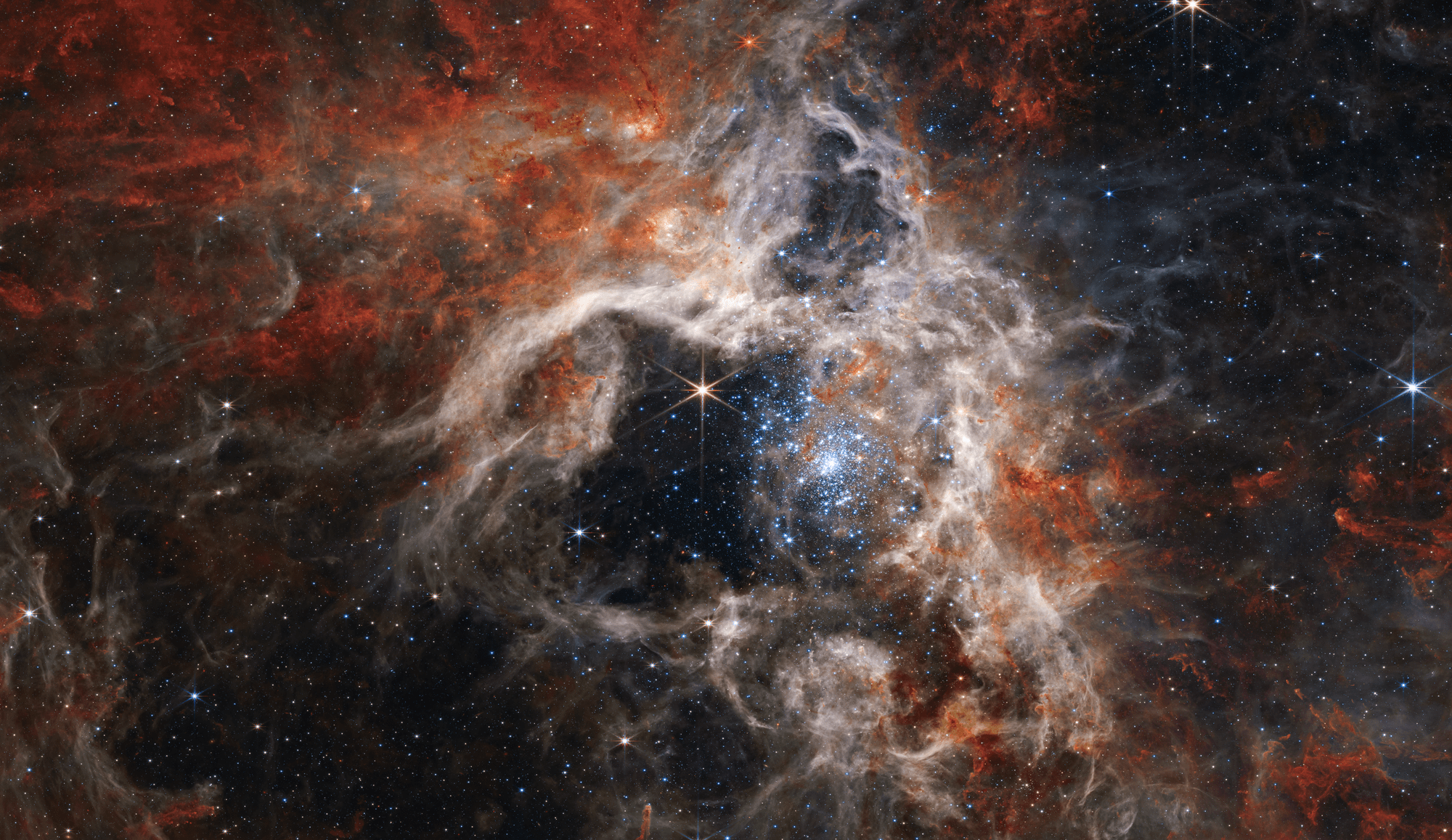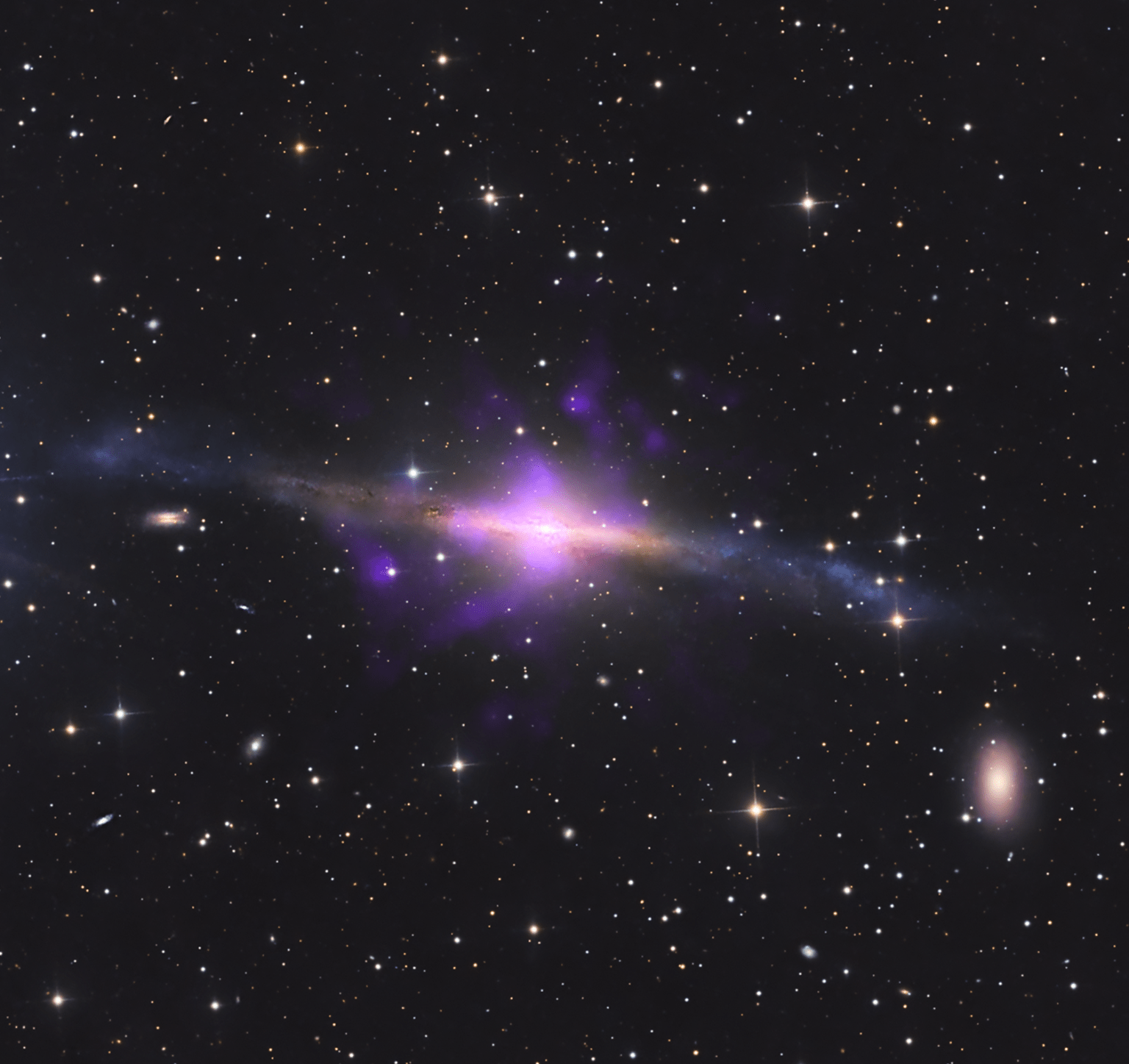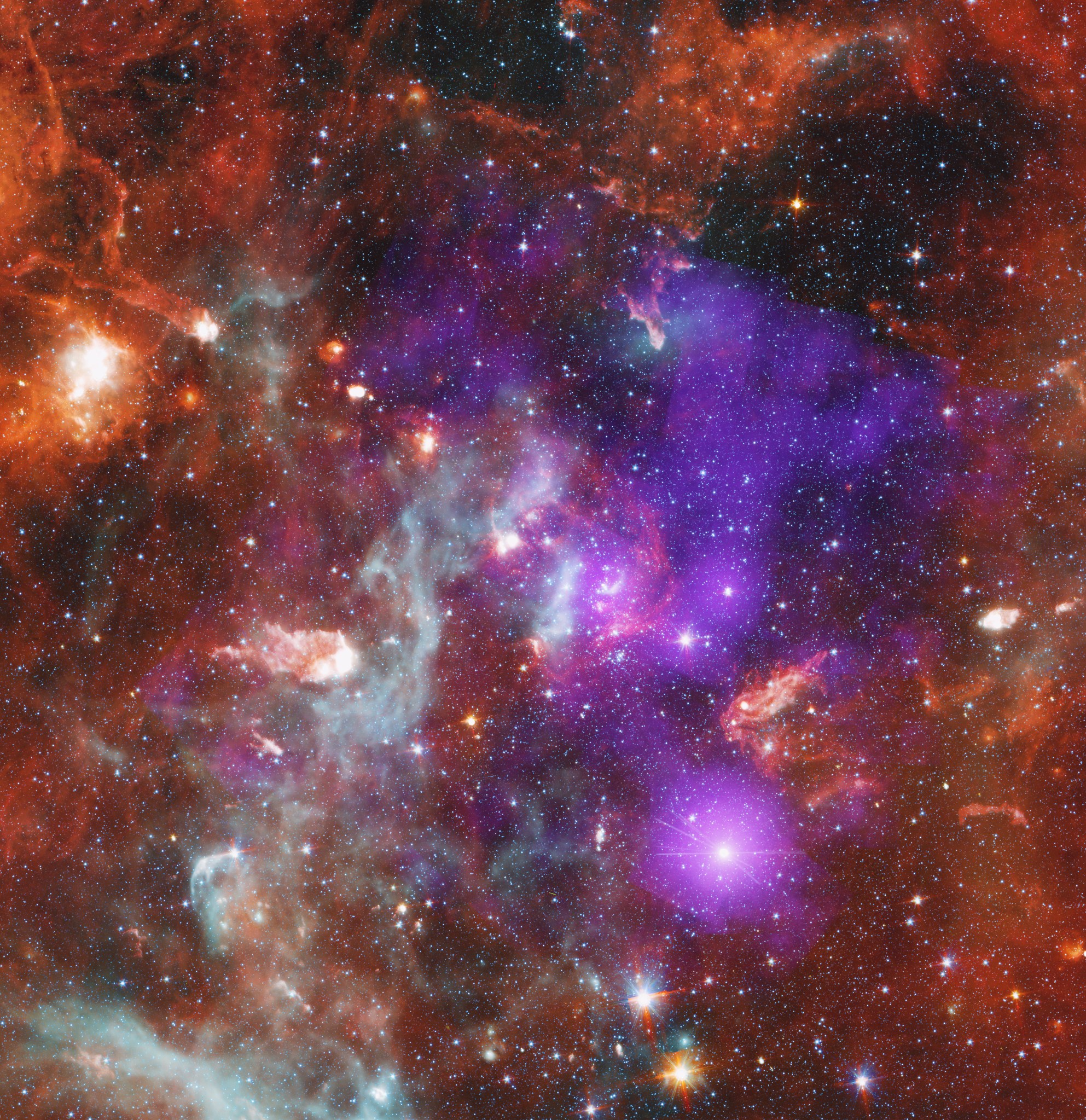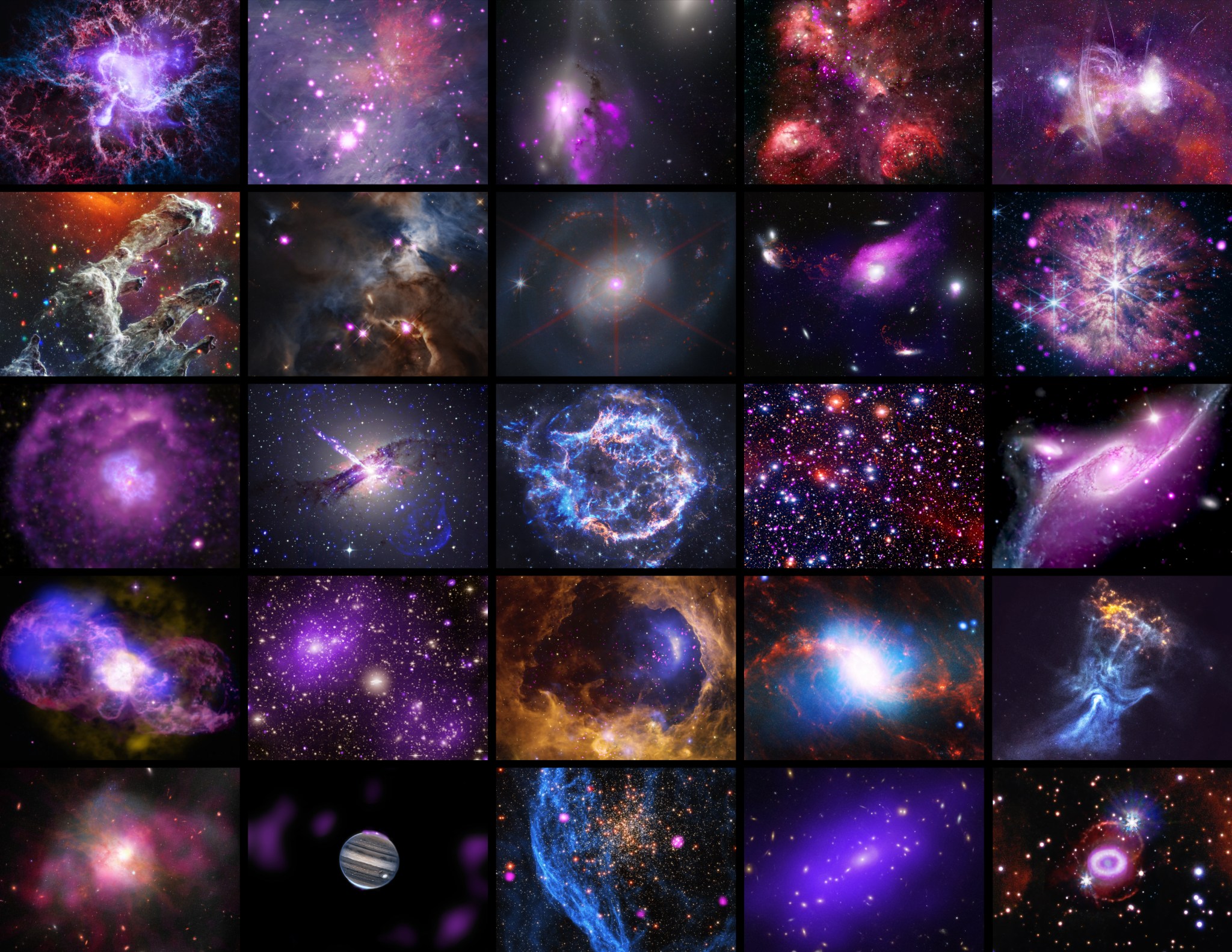X-ray: NASA/CXC/ICRAR, Curtin Univ./Z. Wang et al.; Infrared: NASA/JPL/CalTech/IPAC; Radio: SARAO/MeerKAT; Image processing: NASA/CXC/SAO/N. Wolk Scientists have discovered a star behaving like no other seen before, giving fresh clues about the origin of a new class of mysterious objects. As described in our press release, a team of astronomers combined data from NASA’s Chandra X-ray Observatory and the SKA [Square Kilometer Array] Pathfinder (ASKAP) radio telescope on Wajarri Country in Australia to study the antics of the discovered object, known as ASKAP J1832−0911 (ASKAP J1832 for short). ASKAP J1832 belongs…
Read MoreTag: Chandra X-Ray Observatory
NASA’s Chandra Diagnoses Cause of Fracture in Galactic “Bone”
X-ray: NASA/CXC/Northwestern Univ./F. Yusef-Zadeh et al; Radio: NRF/SARAO/MeerKat; Image Processing: NASA/CXC/SAO/N. Wolk Astronomers have discovered a likely explanation for a fracture in a huge cosmic “bone” in the Milky Way galaxy, using NASA’s Chandra X-ray Observatory and radio telescopes. The bone appears to have been struck by a fast-moving, rapidly spinning neutron star, or pulsar. Neutron stars are the densest known stars and form from the collapse and explosion of massive stars. They often receive a powerful kick from these explosions, sending them away from the explosion’s location at high speeds. Enormous structures resembling bones or…
Read MoreHow Are We Made of Star Stuff? We Asked a NASA Expert: Episode 58
2 min read Preparations for Next Moonwalk Simulations Underway (and Underwater) How are we made of star stuff? Well, the important thing to understand about this question is that it’s not an analogy, it’s literally true. The elements in our bodies, the elements that make up our bones, the trees we see outside, the other planets in the solar system, other stars in the galaxy. These were all part of stars that existed well before our Sun and Earth and solar system were even formed. The universe existed for billions…
Read MoreNASA Research To Be Featured at American Astronomical Society Meeting
6 min read NASA Research To Be Featured at American Astronomical Society Meeting In this mosaic image stretching 340 light-years across, Webb’s Near-Infrared Camera (NIRCam) displays the Tarantula Nebula star-forming region in a new light, including tens of thousands of never-before-seen young stars that were previously shrouded in cosmic dust. The most active region appears to sparkle with massive young stars, appearing pale blue. NASA, ESA, CSA, STScI, Webb ERO Production Team From new perspectives on the early universe to illuminating the extreme environment near a black hole, discoveries from…
Read MoreHang a Shining Star Upon the Highest Bough
X-ray: NASA/CXC/SAO; Optical: Clow, M.; Image Processing: NASA/CXC/SAO/L. Frattare and K. Arcand This new view of the “Christmas tree cluster” NGC 2264, released on Dec. 17, 2024, combines data from NASA’s Chandra X-ray Observatory and optical data from astrophotographer Michael Clow’s telescope in Arizona. Chandra data is represented in red, purple, blue, and white, while optical data is in green and violet. Located about 2,500 light-years from Earth, NGC 2264 is a cluster of young stars between one and five million years old. The stars are seen here as blue…
Read MoreNASA Finds ‘Sideways’ Black Hole Using Legacy Data, New Techniques
4 Min Read NASA Finds ‘Sideways’ Black Hole Using Legacy Data, New Techniques Image showing the structure of galaxy NGC 5084, with data from the Chandra X-ray Observatory overlaid on a visible-light image of the galaxy. Chandra’s data, shown in purple, revealed four plumes of hot gas emanating from a supermassive black hole rotating “tipped over” at the galaxy’s core. Credits: X-ray: NASA/CXC, A. S. Borlaff, P. Marcum et al.; Optical full image: M. Pugh, B. Diaz; Image Processing: NASA/USRA/L. Proudfit NASA researchers have discovered a perplexing case of a black hole that appears to…
Read MoreNASA Missions Spot Cosmic ‘Wreath’ Displaying Stellar Circle of Life
X-ray: NASA/CXC; Infrared: ESA/Webb, NASA & CSA, P. Zeilder, E.Sabbi, A. Nota, M. Zamani; Image Processing: NASA/CXC/SAO/L. Frattare and K. Arcand Since antiquity, wreaths have symbolized the cycle of life, death, and rebirth. It is fitting then that one of the best places for astronomers to learn more about the stellar lifecycle resembles a giant holiday wreath itself. The star cluster NGC 602 lies on the outskirts of the Small Magellanic Cloud, which is one of the closest galaxies to the Milky Way, about 200,000 light-years from Earth. The stars in NGC 602 have fewer heavier elements compared to…
Read MorePlanets Beware: NASA Unburies Danger Zones of Star Cluster
X-ray: NASA/CXC/SAO/J. Drake et al, IR: NASA/JPL-Caltech/Spitzer; Image Processing: NASA/CXC/SAO/N. Wolk Most stars form in collections, called clusters or associations, that include very massive stars. These giant stars send out large amounts of high-energy radiation, which can disrupt relatively fragile disks of dust and gas that are in the process of coalescing to form new planets. A team of astronomers used NASA’s Chandra X-ray Observatory, in combination with ultraviolet, optical, and infrared data, to show where some of the most treacherous places in a star cluster may be, where planets’…
Read MoreAstroViz: Iconic Pillars of Creation Star in NASA’s New 3D Visualization
Learn Home AstroViz: Iconic Pillars of… For Educators Overview Learning Resources Science Activation Teams SME Map Opportunities More Science Stories Science Activation Highlights Citizen Science 4 min read AstroViz: Iconic Pillars of Creation Star in NASA’s New 3D Visualization NASA’s Universe of Learning – a partnership among the Space Telescope Science Institute (STScI), Caltech/IPAC, the Center for Astrophysics | Harvard & Smithsonian, and the Jet Propulsion Laboratory and part of the NASA Science Activation program portfolio – recently released a new 3D visualization of the towering clouds of cosmic…
Read More25 Images to Celebrate NASA’s Chandra 25th Anniversary
NASA/SAO/CXC This montage contains 25 new images with data from NASA’s Chandra X-ray Observatory that is being released to commemorate the telescope’s 25th anniversary in space, as described in our latest press release. Since its launch into space on July 23, 1999, Chandra has been NASA’s flagship mission for X-ray astronomy in its fleet of “Great Observatories.” Chandra discovers exotic new phenomena and examines old mysteries, looking at objects within our own Solar System out to nearly the edge of the observable Universe. There is a broad range of astronomical…
Read More